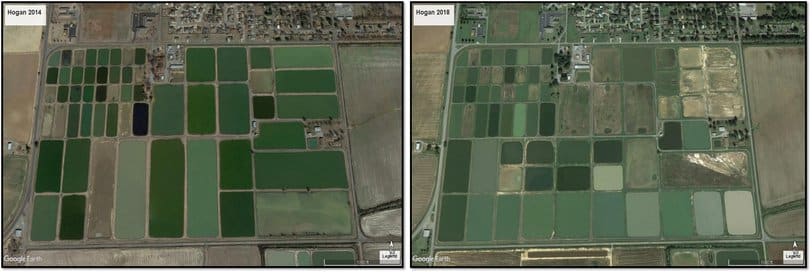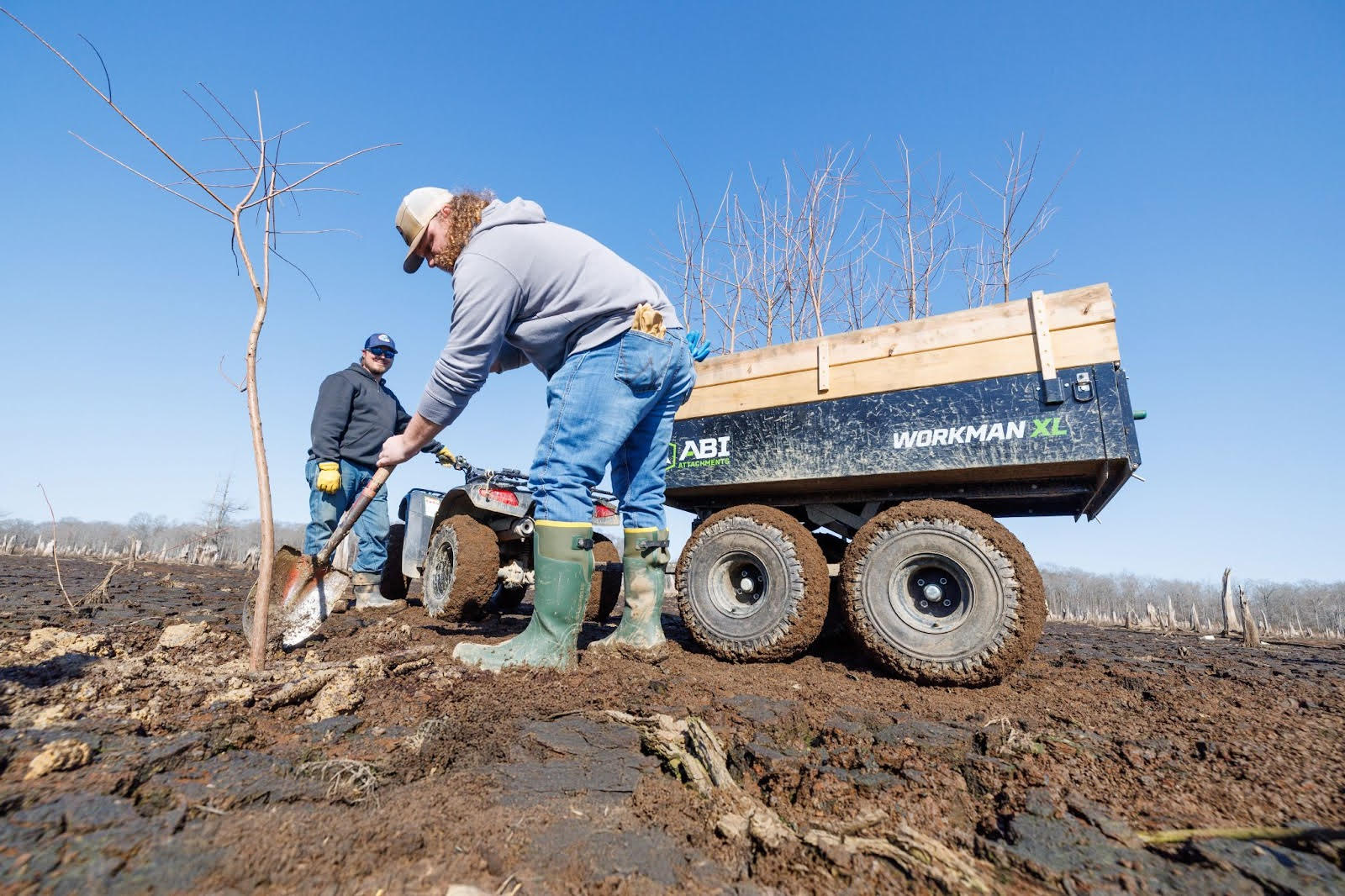AGFC’S Hogan hatchery improvements to increase efficiency
ON 02-17-2021

Feb. 17, 2021
Randy Zellers
Assistant Chief of Communications
LONOKE — Thanks to a planned renovation, the Arkansas Game and Fish Commission’s Joe Hogan State Fish Hatchery will soon be able to increase efficiency and provide even more benefit to Arkansas anglers. The next phase of the Hogan renovation, slated for this year, includes the engineering and construction of an indoor spawning and hatching facility for warmwater species raised at the hatchery.
Moving spawning operations indoors may not seem like a big step to people who don’t work in the aquaculture industry, but the hatchery is still limited to techniques and equipment from decades ago. Some of the containers used to carry and spawn catfish are the same commercial milk jugs used more than 50 years ago. While the process still works, according to Jason Miller, manager of the Hogan hatchery, the improvements will make a huge difference in the way the facility is able to schedule and use their space effectively. Considering all of the channel catfish the agency produces and a large portion of the Florida-strain largemouth bass as well as all other warmwater species the agency stocks are hatched at Joe Hogan Hatchery, this space management will have huge impacts for all anglers in the state.
“We’re still spawning all of our species at Hogan outdoors, which is very weather dependent,” Miller said. “When you have a cold snap, high wind or rain, it can set back efforts dramatically. But with an indoor facility, we’ll be able to control the water quality and temperature as well as the length of ‘daylight’ the fish experience, which will give us much more control of the spawning process. It will also cut down considerably on labor, as we are constantly moving eggs and broodstock back and forth across the hatchery grounds to the facility we are currently using.
“Things are much different than when the hatchery was first built in 1928. We’ve seen some renovations over the years, but the current hatch house was built in 1980.”

Miller said the new indoor facility will hold concrete raceways where fish can be paired to spawn and the fertilized eggs can go to vats in the same building until they hatch. From there they can be transferred to larger tanks in the same building to grow larger before finally being delivered to one of the hatchery’s waiting ponds.
“The spring is always a constant struggle to move fish around the property in different stages of development,” Miller said. “When one species is done, the next is waiting for that space. The hatch house will help eliminate some of that movement and streamline the process.”
The indoor hatch house will also be a key element in the agency’s recent improvements in baitfish culture, primarily threadfin shad production. Shad are extremely sensitive to cold, and an arctic blast like the state is currently experiencing would wipe out any broodstock left outdoors during winter. Since the agency’s renewed focus on stocking forage, crews at the Hogan hatchery have had to borrow tanks from the agency’s mobile aquarium program to give their broodstock shad a place indoors to spend the winter.
“The new hatch house will have tanks where we can keep and monitor our broodstock safely and get a better start on the next year’s spawning process and nursery pond production,” Miller said. “Forage production at our hatcheries is relatively new, but with the growing number of invasive species that are in many waters, raising them at the hatchery is really the only way to do it and maintain confidence we aren’t contributing to any movement of diseases or aquatic nuisance species.”

The new facility is the second phase of improvements the hatchery staff have been engaged in during the last several years to improve the facility. The first phase included renovation of many hatchery ponds, dividing larger ponds into smaller, more efficient hatchery facilities.
“When those large ponds were built, the thinking was bigger might be better,” Miller said. “But over the years, our techniques have improved and we’ve discovered that we could raise more and healthier fish in smaller ponds with more usable shoreline area. The smaller ponds also require less equipment to harvest the fish and are easier to adjust if dissolved oxygen and other water quality indicators are poor.”
The pond renovation phase is a point of pride with Miller and his staff. They were able to accomplish millions of dollars worth of work with relatively little capital expense. Instead of contracting out the construction, hatchery crews rolled up their sleeves and got the job done in addition to their normal duties.
“The main piece of equipment we needed to buy was a large tractor and dirt pan to help do the dirt work,” Miller said. “Chad Wicker, the assistant hatchery manager, had experience building ponds before coming to the AGFC, so he was the boots on the ground guy with the staff to make it happen. He and other hatchery crew members worked many long hours to transform the large ponds, adding 17 new hatchery ponds in the same space. And they did it all without missing any fish production goals.”
Miller says he’s also thankful to the rest of the Fisheries Division for working with some lean budgets and doing without some equipment needs while the renovation was underway.
“We saw a lot of support from other hatcheries, fisheries management and administration to get us the supplies and funds we needed to complete phase one,” Miller said. “A lot of people across the state made sacrifices to upgrade those ponds, but it was accomplished with very little expenses outside of the division’s normal operating funds.”

The next phases of the renovation will require more capital expenditures to make a reality.
“We’re meeting with engineers this month to draw up the plans and get everything on paper, but this won’t be an inexpensive fix,” Miller said. “But with the amount of fish spawned and produced, Hogan is worth the effort.”
Miller says he also plans to talk with engineers to begin preliminary work on how the third and final phase of the renovation will take shape. That phase includes a way to recycle the water used at the hatchery to make the most use of the resources available.
“Right now, we have to pump all of our water from wells to fill ponds and provide for the mobile aquariums,” Miller said. “When we release it for harvesting ponds, that water is lost. So we want to build a tailwater recovery system to reuse what we can and save the amount of water we are using in the fish-culturing process.”
Recent News
Subscribe to Our Weekly Newsletter E-mails
Don’t miss another issue. Sign up now to receive the AGFC Wildlife Weekly Newsletter in your mailbox every Wednesday afternoon (Waterfowl Reports are published weekly during waterfowl season and periodically outside the season). Fishing Reports arrive on Thursdays. Fill in the following fields and hit submit. Thanks, and welcome!


